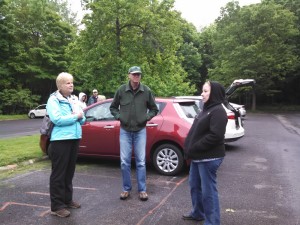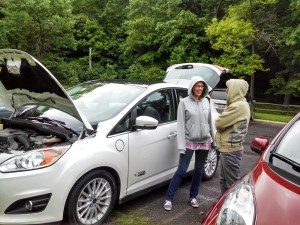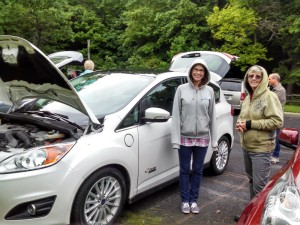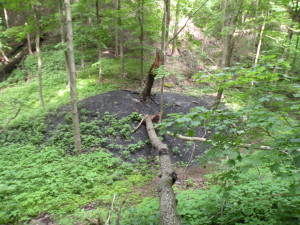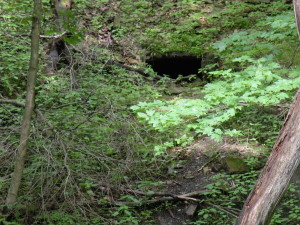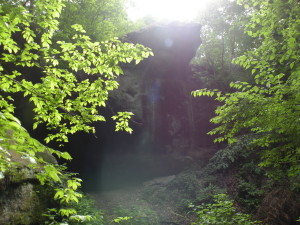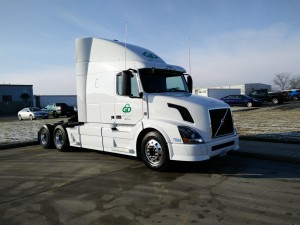Electric Car Program
Electric Vehicle Day was an interesting event. If you missed the event on May 20th you missed some great information on electric cars. There were 5 different types of electric vehicles at the HOI Sierra meeting at Forest Park Nature Center. We had owners bring in their Leaf’s, Ford C-Max, Mitsubishi, and two Volts. The Volts were brought in by East Peoria Green members Bob Jorgensen and Martin Hobbs. Those who attended had the chance to ask questions, sit in the vehicles and get a feel for them and even go for a test drive. East Peoria Green member, Lori Wolf, drove 3 of the five different EV’s. After the hands on examinations in the parking lot we all went to the HOI Sierra meeting. Each driver spoke for between 5 and 10 minutes about the positives and negatives of their EV’s. By the time the evening was over we all had learned a great deal about EV’s in general and the specific characteristics of five types of electric vehicles. If you are interested in learning about EV’s contact Bob Jorgensen.
Rocky Glen Peoria’s Newest Park
Rocky Glen is Peoria’s newest park, a natural area with unique geological beauty, a fascinating human history, and a very special combination of plant communities. A non-profit group, Friends of Rocky Glen (FORG), mantains a website and offers free guided tours every month to showcase this truly awesome park. Visit www.friendsofrockyglen.org, for lots of pictures, information and a full calendar listing of the hikes and what to wear. This is a moderately strenuous hike that can be done by anyone who can walk the total distance of about 1 mile.
The story of the people of Rocky Glen includes the hundreds of carvings on the soft sandstone walls. The oldest carved date is 1880, the youngest markings are not carvings at all but spray paint from young picnic fools.
Coal mining first brought the European people to Kickapoo Creek, and the now abandoned coal mine entrance that hikers pass enroute to the spectacular box canyon once connected over 50 miles of underground tunnel, all four feet high following the Pennsylvania coal seam.
I highly recommend the hike and suggest you look at the website for more information and a possible guided tour.
G&D Integrated
by Linda Tiller, an EP Green member
G&D Integrated, a provider of transportation and logistics services based in Morton, has recently taken a large step toward improving their carbon foot print. They will be purchasing up to 94 new trucks within the year.
G&D is a partner carrier registered with Smart Way. Smart Way is the US Environmental Protection Agency’s program for improving fuel efficiency and reducing greenhouse gases and air pollution from the transportation supply chain industry. Per the EPA.gov website “Smart Way Transportation aims to increase the availability of fuel efficient technologies and strategies that help freight companies same money while also reducing adverse environmental impacts”
The new fleet will consist of Volvo’s with the XE package (exceptional efficiency), one of the highest rated trucks on the market. They are equipped with a full aero package and aluminum wheels, to help with air flow and weight. They also have an on board generator, this allows the driver, when in the sleeper birth, to run the thermostatically controlled generator for heat and air conditioning without idling the truck, saving fuel. Idling the truck burns 1 gallon per hour of fuel, where the generator only uses 1 pint per hour, 1/8 the amount. In addition they are equipped with an automatic I shift averaging 7 miles per gallon, over the current trucks averaging 5 ½ miles per gallon. It doesn’t sound like a lot but when you consider G&D drives over 22 million miles yearly, it adds up fast.
In preparation for purchasing new trucks, G&D did the home work and put 5 of the trucks on the road in their southeast division in Dec of 2012. After seeing the improvement in fuel consumption and performance the decision was made to go ahead with the purchase for the Midwest fleet. Fuel economy is not obtain with lose of power; they have 13 liter engines, with 425 horse power, and 1750 feet of torque.
The Importance of Water Conservation
Water is a very precious element. We couldn’t live without it and we use it in so many important ways. Water is used in homes to drink, wash things, and dispose of waste; in farming to irrigate crops, in the energy industry to cool nuclear reactors or to be turned into steam to run an electric generating turbine at a coal fired power plant, it is used to mine and wash minerals from coal to gold, it is used to water livestock and on fish farms, it is used by other industries to cool and clean raw materials and finished products.
Statistics from the US government tell us that in 2010 more water was used for irrigation than for anything else. This includes all types of irrigation, from yards to crops, and from all sources. These sources are: surface water such as rivers and lakes as well as self supplied water from ponds on golf courses. Another source is ground water. This is water that is below the surface, like underground lakes and aquifers. In the United States we used about 115,000 million gallons of water per day to irrigate. This accounts for about 70 % of all the water used in the US. The other 30 % of water used is split into the categories of residential, 20%, and industrial, 10 %. Of the 115,000 million gallons of irrigation water used a day about 40 % of it comes from groundwater and 60 % comes from surface water. In 2010 California used about 20 % of all irrigation water consumed. Much of this water was used in the Central Valley of California where fruits, vegetables, and nuts are grown for the entire country. The next four states in order of usage are: Idaho 12%, Colorado and Arkansas 8 % each, and Montana 6 %. Other states used the remaining 46 % of all irrigation water, split between the other 45 states. As you know California is in the midst of a severe drought and has lasted longer than 3 years. This drought has greatly limited the amount of water available for necessary irrigation of these many valued crops. To get the water needed California has been draining underground aquifers and surface reservoir like Lake Mead. A recent NASA study states that these Mega-Droughts could last longer than 10 years. This trend of water shortage in one area of the world is a problem not only for farmers in Central California but for farmers and people around the world.
To limit our water use we can plant native drought resistant plants in our yards. We can reduce our household water use. We can curb the water waste in mining, industry, energy production, and farming. Currently each American uses an average of 150 gallons of water a day. In the United Kingdom the average person uses about 40 gallons per day. In China the number is down to 23 gallons a day. In dry arid countries like Ethiopia each person uses about 4 gallons of water a day. You can see that we need to start cutting back on the water we use and the water we waste both as individuals and as a nation.
To find out more about these issues please click on the article called The 25 Best Ways to Conserve Water. It was compiled by the Green Teens Club. The pictographs, charts, and information they use make this problem very understandable. http://www.portapotty.net/water-conservation/.

